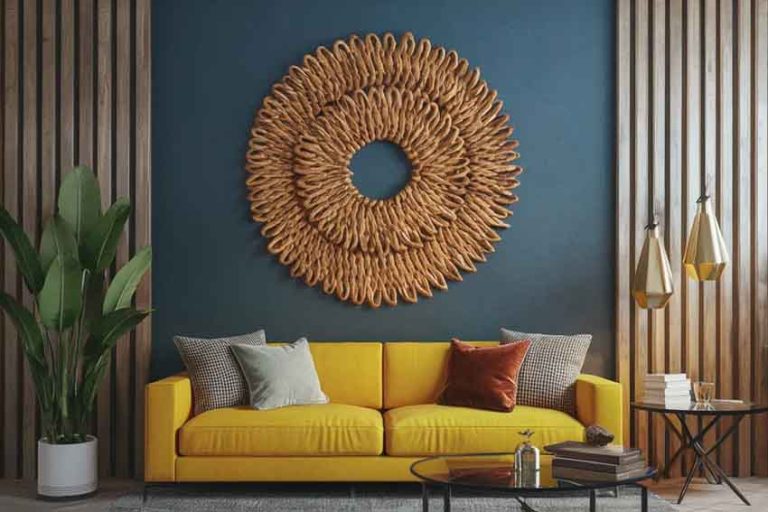In a world increasingly shaped by visuals and sensory experiences, the importance of aesthetics in home decor has never been more pronounced. Home, for many, is more than just a place to rest—it is a personal sanctuary, an intimate reflection of one’s values, tastes, and aspirations. Yet, despite its pivotal role in shaping the ambiance and emotional resonance of a space, aesthetic consideration is often overshadowed by practicalities: budget constraints, furniture functionality, or space optimization. While these elements are undoubtedly vital, overlooking aesthetics is a disservice to the soul of a home. A thoughtful decor strategy rooted in aesthetic principles not only enhances beauty but also deepens emotional well-being, elevates functionality, and creates a timeless harmony in your living space.
To begin with, it is essential to clarify what “aesthetic” means in the context of home decor. It’s not about chasing trends or adhering to a single design doctrine. Rather, it is the deliberate and artful arrangement of visual and tactile elements—color, form, texture, proportion, and light—to craft a coherent and pleasing atmosphere. This pursuit of visual and sensory harmony doesn’t demand extravagance; rather, it invites intentionality. Aesthetic decor is about imbuing your space with a sense of purpose and identity, where every object, hue, and shape communicates something meaningful.
One of the most profound reasons to incorporate aesthetics into your home design is its psychological impact. Numerous studies in environmental psychology affirm that a well-designed, visually pleasing space can significantly affect our mood, stress levels, and productivity. Soft color palettes can invoke calmness, while natural textures like wood, linen, or stone can ground us and provide a sense of serenity. Similarly, the interplay of natural and artificial lighting can affect our circadian rhythms, directly influencing how we sleep, think, and feel. When your home reflects beauty, it does more than impress guests—it nurtures your emotional health.
Furthermore, an aesthetically driven decor strategy enhances coherence. Many homes, especially those decorated without a clear vision, can feel disjointed—a mishmash of trends, inherited pieces, and impulse buys. Without a unifying aesthetic, such spaces often lack flow and feel emotionally disconnected. By contrast, a space guided by a cohesive aesthetic—whether minimalist, rustic, Scandinavian, or eclectic—exudes harmony. The aesthetic becomes the thread that weaves disparate elements into a unified tapestry, allowing the space to feel intentional rather than accidental.
There is also a powerful sense of identity that arises from aesthetic choices. A home should feel like you. Whether it is the gentle curve of a mid-century chair, the romantic flourish of an antique mirror, or the quiet boldness of a monochrome palette, aesthetic decisions are deeply personal. They allow you to articulate your individuality in a language that speaks beyond words. This form of silent self-expression can be incredibly grounding in a fast-moving, noisy world. Walking into a room that mirrors your inner landscape creates a sense of belonging that no off-the-shelf solution can replicate.
Practical benefits also abound when aesthetics are prioritized alongside function. Contrary to the belief that beauty and utility are at odds, well-designed aesthetics often enhance usability. Take, for instance, a kitchen where everything has a place, the materials are both durable and beautiful, and the lighting is as functional as it is flattering. Or consider a home office where the color scheme promotes focus, and the furnishings are ergonomic yet elegantly styled. In such environments, beauty becomes a tool—a way to make everyday experiences smoother, more enjoyable, and more fulfilling.
It is also worth considering how aesthetics influence longevity in decor choices. Fads fade, but true aesthetic vision endures. Homes anchored in thoughtful, timeless aesthetics are more likely to age gracefully. Instead of chasing fleeting trends—fast furniture, Instagram-inspired gimmicks—a well-curated aesthetic encourages investment in quality, character, and authenticity. These are the elements that give a home soul. A house decorated with this sensibility tells a story that grows richer with time, rather than needing constant updates to remain relevant.
Moreover, the aesthetic dimension of home decor fosters a deeper connection with the space. When you take the time to choose not just what fills your home but how and why it fills it, you cultivate mindfulness. You become more attuned to your surroundings, more appreciative of the light as it filters through the curtains in late afternoon, or the way a shadow dances across a well-chosen texture. This attentiveness is not trivial—it is a quiet form of daily joy. Aesthetic living is, in many ways, a practice of presence.
In an age where we are bombarded by stimuli and pressured by speed, aesthetic design invites slowness, intention, and contemplation. It calls us to resist the disposable and embrace the enduring. It reminds us that beauty is not frivolous; it is a vital ingredient in a life well-lived. When your home is beautiful, not just in form but in feeling, it becomes a space that restores, inspires, and supports your best self.
In conclusion, if your home decor strategy has so far focused solely on the pragmatic, it may be time to reconsider. Infusing your space with aesthetic thoughtfulness does not require a grand budget or formal training—it simply requires attentiveness, authenticity, and care. The result is not merely a beautiful home, but a meaningful one. And in the end, that is what truly elevates a house into a haven.

